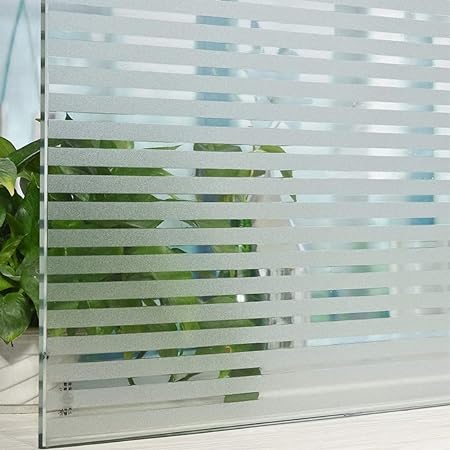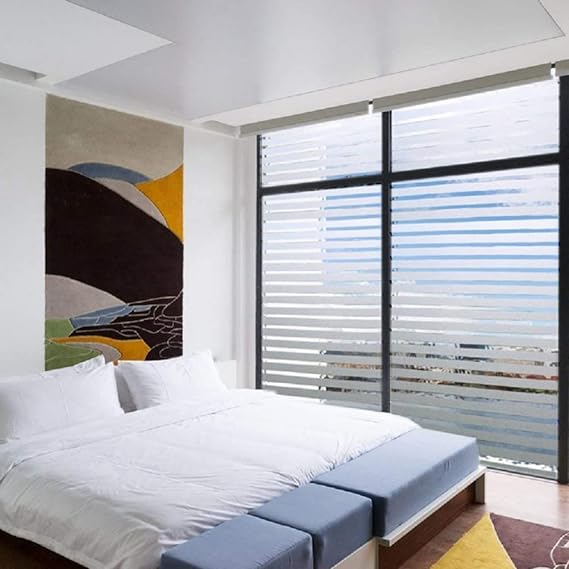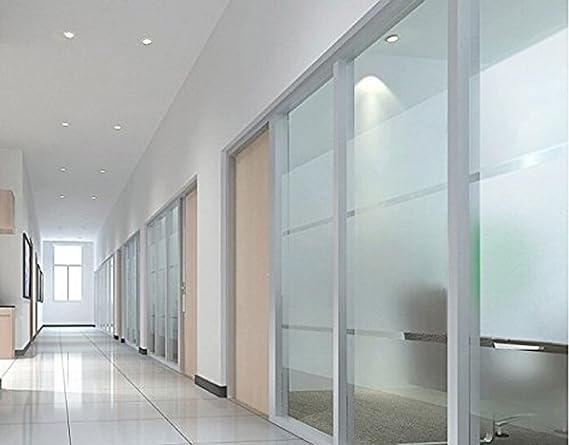What is Toughened Glass
Toughened glass, also known as tempered glass, is a type of safety glass that has been treated with controlled thermal or chemical processes to increase its strength compared to regular glass. The tempering process involves heating the glass to a high temperature and then rapidly cooling it. This creates surface compression and edge tension, resulting in a glass that is much stronger and more resistant to breakage than untreated glass.
When toughened glass does break, it shatters into small, blunt pieces rather than sharp shards, reducing the risk of injury. This property makes it suitable for various applications where safety is a concern, such as in windows, doors, shower enclosures, glass partitions, and automotive windows.
Toughened glass is widely used in both residential and commercial settings due to its strength, safety features, and versatility. It offers durability and peace of mind in applications where impact resistance and safety are paramount.
In toughened glass, the thickness is typically measured in millimeters (mm). The thickness can vary depending on the application and requirements. Common thicknesses for toughened glass range from 3mm to 19mm or more, with popular thicknesses being 4mm, 6mm, 8mm, 10mm, and 12mm for various applications such as windows, doors, partitions, and tabletops. The specific thickness required will depend on factors such as the size of the glass panel, the intended use, and structural requirements.

Where is Toughened Glass Required
Toughened glass, also known as tempered glass, is required or recommended in various applications where safety and durability are important considerations. Some common places where toughened glass is used include:
- Building Construction Toughened glass is often used in windows, doors, and glass facades of buildings to provide safety against breakage due to human impact or environmental factors.
- Automobiles In vehicles, toughened glass is used for windshields, side windows, and rear windows to ensure passenger safety. It reduces the risk of injuries in case of accidents by shattering into small, blunt pieces rather than sharp shards.
- Furniture Toughened glass is used in furniture items such as tabletops, shelves, and cabinets. This provides strength and safety, reducing the risk of injury if the glass breaks.
- Shower Enclosures Glass used in shower doors and enclosures is often toughened to prevent injuries from accidental breakage and to withstand the temperature changes associated with showers.
- Glass Partitions In commercial spaces, toughened glass is used for interior glass partitions to create open and bright environments while ensuring safety and durability.
- Sports Arenas and Public Spaces Toughened glass is used in areas like stadiums and public spaces where large glass panels are required. This helps prevent injuries in case of breakage and ensures the structural integrity of the glass.
- Electronic Devices Many electronic devices, such as smartphones and tablets, use toughened glass for their screens to protect against scratches and impacts.
Overall, toughened glass is required or recommended in any situation where there is a risk of breakage and where safety is a concern. Its ability to break into small, less hazardous pieces makes it a preferred choice in many applications.
Glass Design
Glass design encompasses a wide range of artistic and functional applications involving glass as a primary material. Here are some aspects of glass design:
- Architectural Glass Design Glass is used extensively in architecture for windows, doors, facades, and skylights. Architectural glass design involves creating aesthetically pleasing and structurally sound glass elements that complement the overall design of buildings.
- Interior Design Glass is used in interior design for various purposes such as partitions, balustrades, countertops, and decorative elements. Glass can be customized with different textures, colors, and patterns to enhance the visual appeal of interior spaces.
- Glass Art Glass art involves creating sculptures, installations, and decorative objects using glass as the primary medium. Glass artists employ techniques such as blowing, casting, fusing, and slumping to manipulate molten glass into intricate forms.
- Stained Glass Stained glass design involves creating colorful windows, panels, and artworks by assembling pieces of colored glass using lead or copper foil. Stained glass windows are commonly found in churches, cathedrals, and historic buildings, but they are also used in contemporary architecture and interior design.
- Glass Etching and Engraving Glass can be etched or engraved to create intricate designs, patterns, and textures on its surface. This technique is often used in decorative glassware, signage, and architectural elements.
- Functional Glass Design Glass is used in functional products such as lighting fixtures, mirrors, furniture, and tableware. Designers focus on both aesthetics and usability when creating these objects.
- Glass Mosaics Mosaic art involves arranging small pieces of colored glass (or other materials) to create intricate patterns and images. Glass mosaics are used for decorative purposes in architecture, interior design, and public art installations.
- Glass Jewelry Glass is used in jewelry making to create beads, pendants, and other accessories. Artists can work with molten glass to create unique handmade beads or incorporate glass elements into metal jewelry designs.
Glass design combines craftsmanship, creativity, and technical skill to create functional and decorative objects that enhance the beauty and functionality of various spaces.
Glass Design For Window
Designing glass for windows involves considering both aesthetic and functional aspects to create windows that enhance the overall architecture of a building while providing practical benefits such as natural light, ventilation, and insulation. Here are some considerations for glass design for windows:
- Type of Glass Select the appropriate type of glass based on factors such as energy efficiency, safety, and privacy. Options include clear glass for unobstructed views, low-emissivity (Low-E) glass for thermal insulation, tempered or laminated glass for safety and security, and textured or frosted glass for privacy.
- Glazing Options Choose between single-glazed, double-glazed, or triple-glazed windows depending on the climate and insulation requirements of the building. Double-glazed and triple-glazed windows offer better thermal insulation and soundproofing compared to single-glazed windows.
- Frame Design Consider the design and material of the window frames to complement the glass design and overall aesthetic of the building. Common frame materials include wood, aluminum, vinyl, and fiberglass.
- Natural Light Design windows to maximize natural light penetration into interior spaces while minimizing glare and solar heat gain. Consider the orientation of the building and the placement of windows to optimize daylighting.
- Ventilation Incorporate operable windows or window openings to facilitate natural ventilation and airflow within the building. Choose window types such as casement, awning, or tilt-and-turn windows that allow for easy operation and control of ventilation.
- Safety and Security Ensure that windows are designed with safety features such as tempered or laminated glass, especially for windows located in high-traffic areas or within reach of occupants. Consider adding window locks, security screens, or impact-resistant glass for enhanced security.
- Aesthetic Details Enhance the visual appeal of windows with decorative elements such as mullions, transoms, grids, or decorative overlays. Explore options for customizing glass with patterns, textures, or colors to add architectural interest and complement the style of the building.
- Environmental Considerations Choose sustainable and eco-friendly glass options, such as recycled glass or low-impact production processes, to minimize the environmental footprint of window design.
By carefully considering these factors, designers can create windows that not only meet functional requirements but also contribute to the overall aesthetics and sustainability of the building.

Glass Design For Door
Designing glass for doors involves balancing aesthetics, functionality, and safety considerations to create doors that are visually appealing, practical, and secure. Here are some key factors to consider when designing glass for doors:
- Safety Glass Choose safety glass options such as tempered or laminated glass to minimize the risk of injury in case of breakage. Tempered glass is heat-treated to increase its strength and shatter resistance, while laminated glass consists of multiple layers bonded together to prevent the glass from breaking into sharp shards.
- Privacy Determine the level of privacy required for the door and select appropriate glass options. Clear glass provides maximum visibility but offers minimal privacy, while frosted, textured, or obscured glass can be used to obscure the view while still allowing light transmission.
- Decorative Elements Enhance the aesthetic appeal of the door with decorative glass elements such as etched designs, stained glass panels, or decorative overlays. These elements can add visual interest and complement the overall style of the door and surrounding architecture.
- Frame Design Consider the design and material of the door frame to complement the glass design and ensure structural integrity. Common frame materials include wood, metal, and fiberglass, each offering different aesthetic and functional characteristics.
- Security Features Incorporate security features such as reinforced glass, multi-point locking systems, or impact-resistant glass for doors that require enhanced security. Consider the location of the door and the level of security required for the specific application.
- Natural Light Design doors to maximize natural light transmission into interior spaces while maintaining energy efficiency. Consider the orientation of the door and the placement of glass panels to optimize daylighting and minimize glare.
- Functionality Ensure that the door design meets functional requirements such as ease of operation, accessibility, and durability. Choose door hardware such as handles, hinges, and locks that are compatible with the design and intended use of the door.
- Environmental Considerations Select sustainable glass options and production processes to minimize environmental impact. Consider factors such as energy efficiency, recyclability, and the use of eco-friendly materials in the door design.
By carefully considering these factors, designers can create glass doors that not only enhance the visual appeal of a space but also provide practical benefits such as safety, security, and natural light transmission.
Glass Design For Partition In Office
Designing glass partitions for office spaces involves considerations of both functionality and aesthetics, aiming to create a productive, comfortable, and visually appealing work environment. Here are some key aspects to consider:
- Transparency vs. Privacy Determine the desired level of transparency and privacy for the office partitions. Options include clear glass for maximum visibility, frosted or textured glass for partial privacy, or fully opaque glass for complete privacy.
- Acoustic Performance Consider the acoustic requirements of the office environment and select glass partitions with appropriate sound insulation properties. Acoustic laminated glass or double-glazed partitions can help reduce noise transmission between workspaces.
- Frameless vs. Framed Design Choose between frameless glass partitions for a modern and seamless look or framed partitions for added structural support and design versatility. Frameless partitions offer a sleek appearance and maximize light transmission, while framed partitions provide stability and allow for various design elements.
- Customization Explore options for customizing glass partitions with decorative elements such as etched designs, printed patterns, or colored glass panels. These elements can enhance the aesthetic appeal of the partitions and reflect the company’s branding or design preferences.
- Integration with Architecture Ensure that the design of glass partitions complements the overall architecture and interior design of the office space. Coordinate with other design elements such as flooring, lighting, and furniture to create a cohesive and harmonious environment.
- Flexibility and Modularity Design glass partitions that allow for flexibility and adaptability to changing office layouts and requirements. Consider modular partition systems that can be easily reconfigured or relocated as needed to accommodate evolving workspace needs.
- Accessibility and Safety Ensure that glass partitions comply with accessibility standards and safety regulations. Choose safety glass options such as tempered or laminated glass to minimize the risk of injury in case of breakage.
- Natural Light Optimization Maximize natural light penetration into the office space by strategically positioning glass partitions and minimizing obstructions. Consider the orientation of the building and the placement of partitions to optimize daylighting and create a bright and inviting work environment.
By considering these factors, designers can create glass partitions that not only enhance the functionality and efficiency of office spaces but also contribute to a visually appealing and collaborative work environment.


